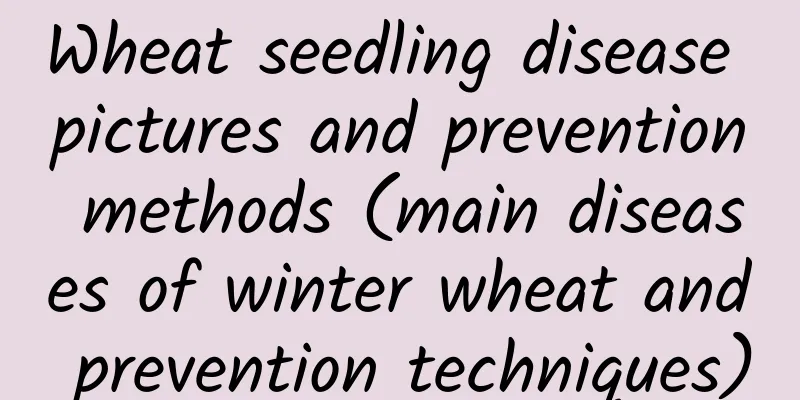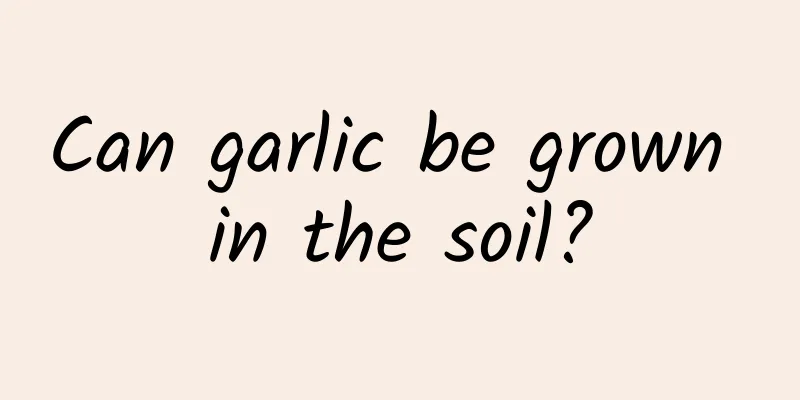Wheat seedling disease pictures and prevention methods (main diseases of winter wheat and prevention techniques)

Wheat Seedling Diseases and Their Control MethodsAs the temperature rises in spring, wheat diseases and insect pests are becoming more and more common, with more and more wheat leaves turning yellow and seedlings dying. In terms of diseases, the main diseases in the wheat seedling stage are sheath blight, root rot, stem base rot, total rot, and rust. Let me talk about the prevention and treatment of these diseases. Symptoms of wheat sheath blight (picture) Wheat sheath blightSheath blight is more common in wheat and can occur at any stage of its growth. When wheat seedlings are infected, the diseased seedlings will die and the bud sheaths will turn black. At the tips of 3-4 wheat leaves, scalding cloud spots appear on the wheat leaf sheaths, and the stems may also rot. When the humidity is high, white mycelium will appear. Wheat with sheath blight is also prone to lodging. As the temperature rises during the jointing and greening period in spring, the speed of infection by the pathogen accelerates, and the sheath blight will also develop faster. Prevention and control methods : It is recommended to use triazole fungicides for prevention and control, and it is recommended to use tebuconazole, hexaconazole, pyraclostrobin, and thiophanate-methyl for prevention and control. It is recommended not to use excessive nitrogen fertilizers. Adding phosphorus and potassium sources when spraying pesticides is beneficial to improve wheat resistance and reduce the occurrence of diseases. Symptoms of wheat root rot (picture) Wheat root rotWheat root rot is a soil-borne disease that mainly harms the underground rhizomes. In severe cases, the leaves will die. In this way, the root system of wheat will also rot, and as the root system rots, the above-ground parts will also die. Prevention and control methods : Root rot is related to climate and farming patterns, and is also related to excessive nitrogen fertilizer application. It is recommended to use difenoconazole to mix seeds, and when the disease is serious, it is recommended to use meconazole for prevention and control. Symptoms of wheat basal rot (picture) Wheat basal rotWheat basal rot occurs more often in the seedling stage and develops rapidly in the green stage. Lesions form at the internodes at the base of the stem, and in severe cases, the wheat will die. A white mold layer will appear when the humidity is high. The occurrence of base rot is also related to the application of nitrogen fertilizer. The lack of winter irrigation in winter may also affect the occurrence of the disease. Prevention and control methods : Adding phosphorus and potassium sources when spraying pesticides can help reduce the occurrence of diseases. It is recommended to prevent wheat basal rot by coating, which can reduce the incidence of the disease after greening. Symptoms of wheat take-all disease (picture) Take-all diseaseTake-all disease is a root disease. When the seedlings are infected, the roots turn black. In severe cases, the root system turns black. When it occurs in the seedling stage, the leaves turn black and form "black foot" symptoms. The control effect of wheat take-all disease in the later stage is poor, so prevention is important. Prevention and control methods : It is recommended to use coating for prevention and control. Rust is not a common disease of wheat, and it is recommended to prevent and control it together with other diseases. Symptoms of wheat rust (picture) Wheat rustWinter wheat rust occurs earlier, and it occurs more frequently when the temperature is high in winter. Excessive nitrogen fertilizer application also causes more rust. Wheat rust was serious in the past few years, so special attention needs to be paid. Moreover, wheat rust occurs in all periods, and timely prevention and control has a good effect. Prevention and control methods : Triazole fungicides are commonly used for wheat rust, and pyraclostrobin, epoxiconazole, and tebuconazole are all effective. If the resistance is serious, the drugs can be rotated appropriately to reduce the spread of the disease. |
>>: Remedial measures after wheat frost damage (causes and solutions for severe wheat frost damage)
Recommend
Chrysanthemum propagation method, is the propagation survival rate high?
1. Planting In autumn from October to December, c...
Cultivation methods and techniques of Dendrobium chrysotoxum
Dendrobium chrysanthemum , commonly known as gold...
How to care for the green giant flower to make it more vigorous
Green Giant Flower Growing Conditions The Hulk fl...
What flowers are good to grow when there is a pregnant woman at home?
1. Suitable for placement (1) Absorb harmful gase...
The jasmine in his house is so abundant, fragrant and white, and this is how he grows it!
1. How to care for jasmine 1. Adequate lighting J...
Common aquatic plants for artificial floating islands Floating plants suitable for artificial floating islands
Since plants are highly regional, we should pay m...
How does the dragon blood tree fork?
Topping fork time selection Although the growth o...
Can orchids be grown in coconut coir?
Can orchids be grown in coconut bran? Coconut bra...
What kind of soil is best for growing Phalaenopsis?
The Phalaenopsis orchid is shaped like a butterfl...
How to plant crape myrtle seeds
1. Seed collection The fruits generally mature in...
Three taboos for spring care of succulent plants
Avoid water shortage and control water for succul...
When to fertilize camellia
1. When to apply fertilizer 1. Spring: After ente...
Passion fruit's growing environment and local conditions
Passion fruit growing environment and conditions ...
Can urine be used to water roses?
Can roses be watered with urine? Roses can be wat...
The efficacy and function of Crinum serrata (medicinal value)
The efficacy and function of Wenshulan effect sou...









